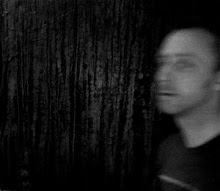


I was in Leclerc (France's Tescos) this morning in Limoux, the book section. I was looking for a book that has just been published on the camp at Rivesaltes that I knew was available in other branches. I looked on the shelves next to the till, the local interest section - I found loads of books on Rennes-le-Chateau (local Glastonbury) and also on the Cathars, but not the book on Rivesaltes. The cashier had to phone the manager, he took me to the history section where we found the book. When I asked why the book wasn't on the display of local interest books he said that it is a history book - I pointed out the title: "Les Camps de Rivesaltes, 1935 - 2007", he replied it's not a subject that tourists would be interested in. Bizarre.
I've been corresponding with Suzanne Bardgett (Head of Department of Holocaust and Genocide History at The Imperial War Museum) regarding my project and coincidentally she shall be in this area during the summer, so we are trying to arrange to meet so that I can give her a tour of the camp. She mentioned the 'Journal of Helene Berr', a Parisian Jew who was sent to Auschwitz from Drancy and then was killed at Bergen - Belsen five days before its liberation. She has been called France's Anne Frank. I wasn't aware that it had been published, but will now add it to my reading list - I am looking forward to reading something that's been translated in to English for a change - all the books I've read recently have been in French and very hard work.
I'm also in the process of watching "The Sorrow and the Pity" (French documentary made in 1969 on Vichy France's collaboration with Germany during the war, including interviews of resistance members from Clermont-Ferrand, German soldiers, politicians, French and British MOD). I'm finding it fascinating, it's putting all the snippets of information on France during the war in to a context.


 Back to top
Back to top













































